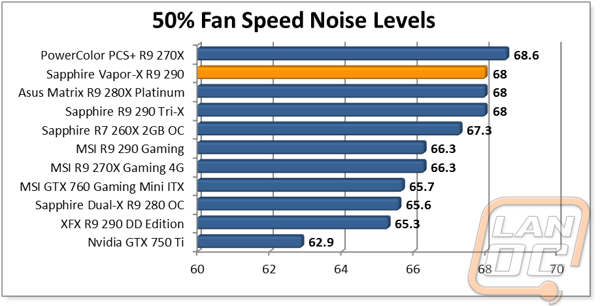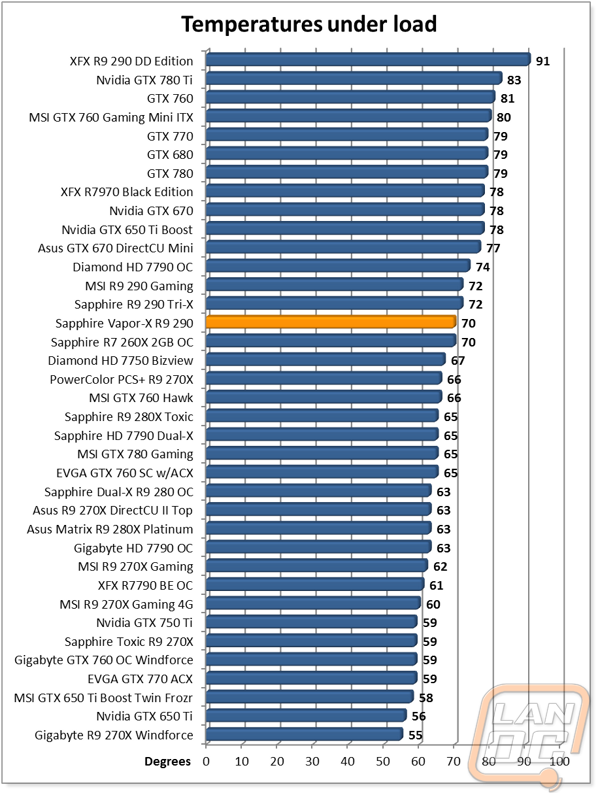Cooling, Noise, and Power
Typically, the difference between similar models in game is only a few FPS. Where manufactures can really set themselves apart is in the cooling department. Sapphire has put a big focus on that with the Vapor-X cooling for example. Because of that our cooling, noise, and power section plays a big role in our testing. I put the Vapor-X 290 through all of our tests to see how it performs compared to the other R9 290’s that I have tested previously, including the Tri-X Sapphire card. When it came to power consumption their wasn’t a single card that pulled less than the Vapor-X 290, the overclock and three fans helped push the Vapor-X R9 290 just past the GTX 780 Ti that held the title before.

Typically triple fan designs don’t perform that well in idle noise tests so the slightly high performance at idle wasn’t a big shock to me. This is however exactly why Sapphire added the switch on the back of the PCB to turn off two of the three fans at low temperatures. With this turned off our idle noise dropped down to just over 61 decibels. Under load, the Vapor-X ran quieter than the Tri-X. This put the Vapor-X 5 decibels lower than the MSI 290 as well, a better cooling design means lower fan RPMs and less noise.


With the other R9 290’s all over the top of our temperature charts the Vapor-X R9 290 had to work hard to get down near the middle of the pack, down with some 270X’s. The end result was 70 degrees, two less than the Tri-X and MSI’s card and over 20 less than XFX’s 290. This proves that the vapor chamber design does help cool more, even with a higher overclock.



